This summer’s Copa América was supposed to be somewhat of a dress rehearsal for the USMNT, eagerly anticipating co-hosting the 2026 World Cup and subsequently hosting the best of the best in international football. After consistently proving their talents within the CONCACAF competitions, the United States welcomed the likes of Brazil and Argentina with the goal of finally flexing their muscles against top-class opposition. However, the reality of the matter could not be any more different, with Gregg Berhalter’s men crashing out of the group stage and becoming the first Copa América hosts to miss out on the knockout stages altogether. Their performances really put a dent in any national pride surrounding the team, with many fans speculating whether or not their young talents had matured since the 2022 FIFA World Cup in Qatar.
The early exit for the United States Men’s National Team only exacerbates negative perceptions surrounding this current crop of American players, having missed their opportunity to test themselves against greater opposition before the World Cup rolls around. A pre-tournament meeting with Colombia only fuelled more feelings of anxiety due to the nature in which they were rolled over, whilst their final group stage match against Uruguay left Berhalter’s side feeling helpless and unable to put up the necessary fight needed to qualify. Another string of poor results ultimately prompted the US Soccer Federation to relieve Berhalter of his coaching duties, only creating more disharmony within the squad. Perhaps one of the most damning narratives emerging from the tournament would be the neighbouring Canadian national team exceeding expectations and carrying the torch for North American football.
This tactical analysis and scout report will begin to highlight some of the reasons why the United States fell at the first hurdle, leaving themselves on the wrong end of the crucial moments which decided their fate. Our analysis will address their tactics on both sides of the ball, which failed to prove convincing, even when tasting victory in their opening match with Bolivia.
Limiting the wide threat
A lot of the discourse heading into the Copa América revolved around Berhalter’s ability to recreate the attacking prowess of Sergiño Dest, with the full-back missing from the starting eleven through injury. Joe Scally stood out as a worthy replacement, but his footballing proficiencies are much more tailored to his work off the ball. It was clear throughout the tournament that the cornerstone of the United States’ attacking plan involved stretching their opposition and making use of their dynamic threat on both flanks. The US ranked 2nd amongst all Copa América teams for 1v1 attempts, with 25.76 per 90 to go with their impressive 69.40% success rate. In their judgement day match against Bielsa’s Uruguay, just 24% of their attacking touches occurred in the middle third of the pitch, providing a clear indication of how they wanted to hurt their opposition.
Rejuvenating the United States’ attacking spark from the defensive line was Antonee Robinson, with the Fulham left-back providing moments of innovation and individual talent. His attacking influence was evident throughout the opening two matches; he supplied important overlapping movement against Bolivia and excellently caught Panama off guard to assist Balogun’s opener despite their numerical deficit. Robinson’s 3.67 shot-creating actions ranked him in the 98th percentile across full-backs at the Copa América, so Marcelo Bielsa and Uruguay devised a tactical switch to limit his attacking threat when the two sides faced in the final group stage match.
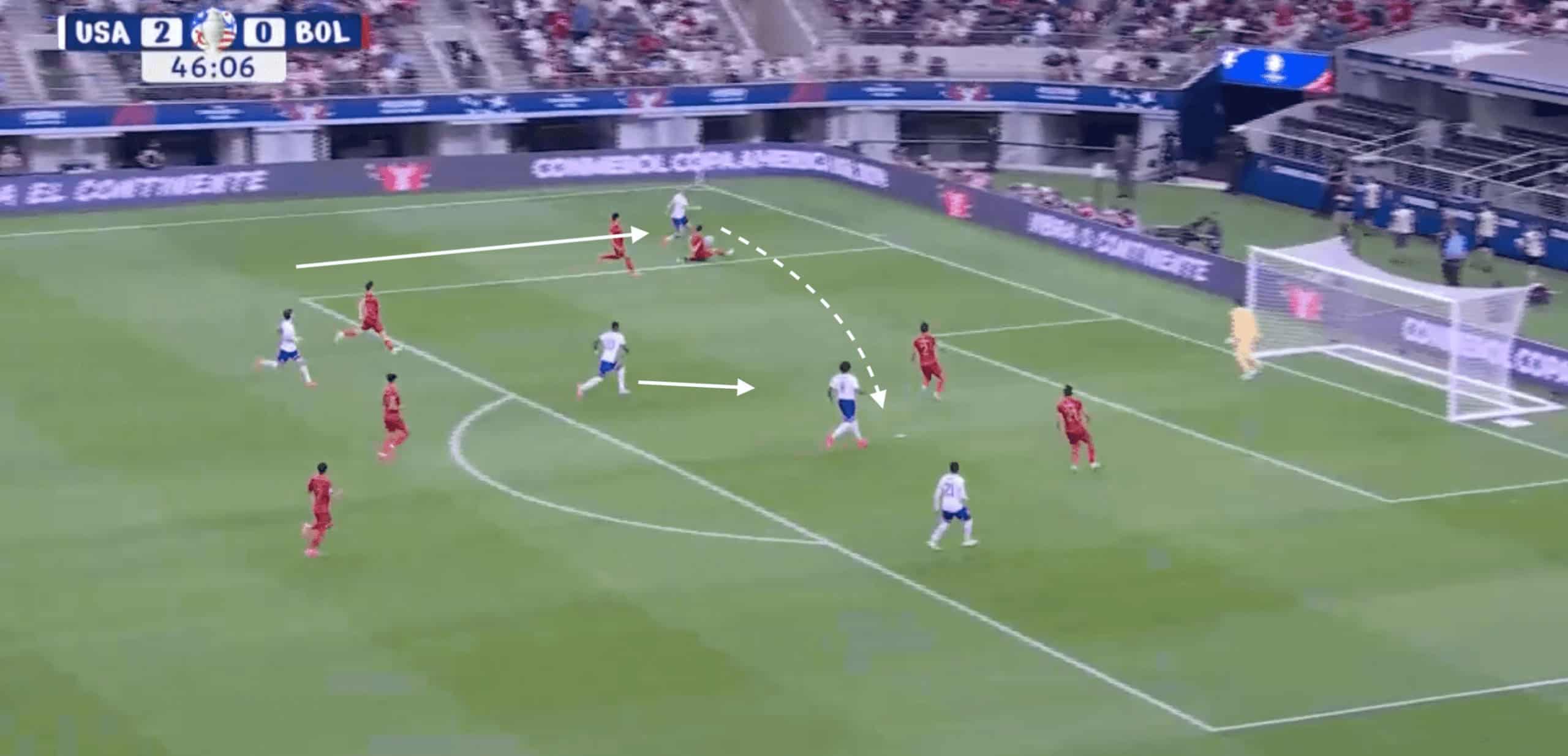
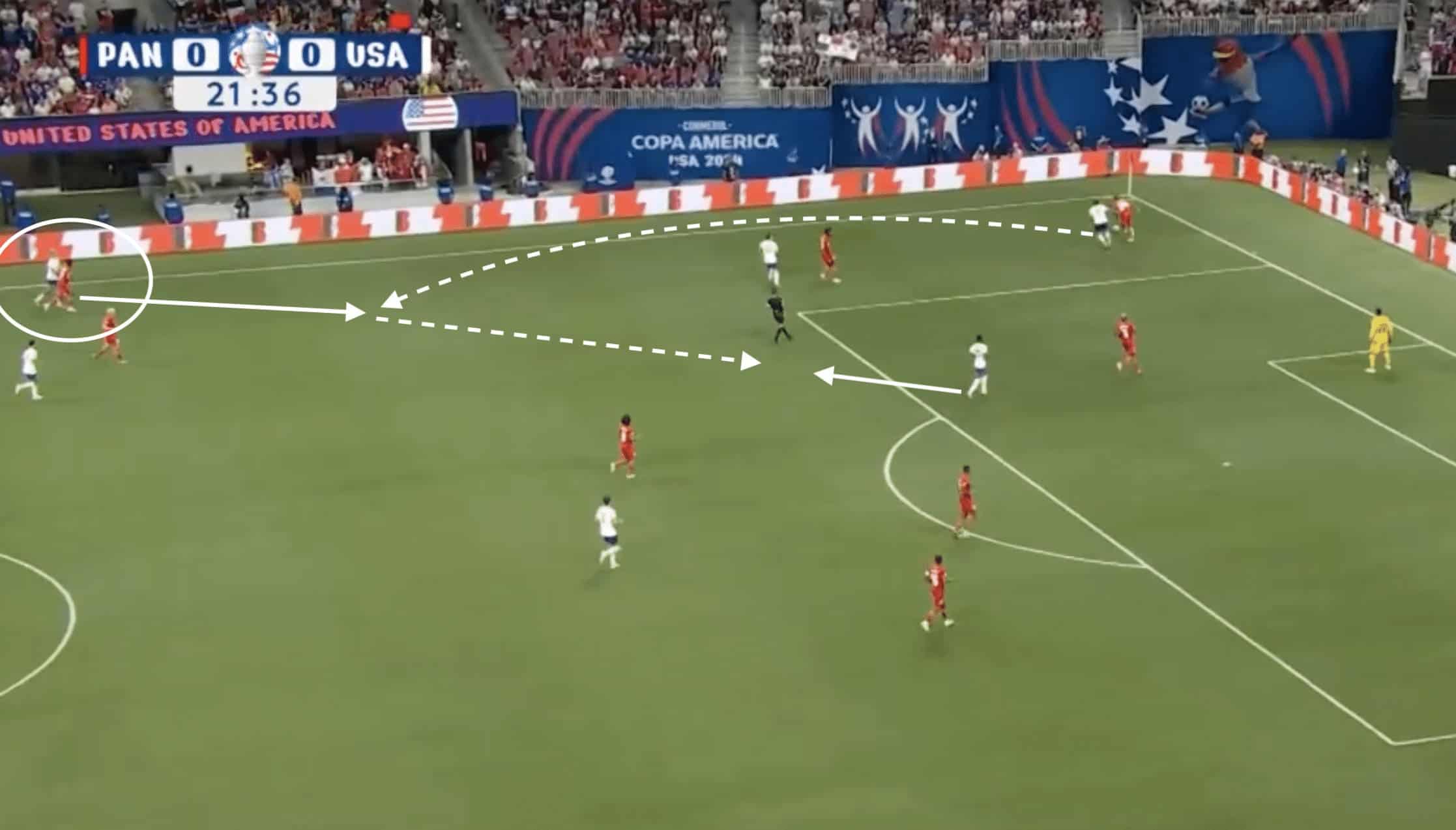
Despite having everything to play for, the United States were simply left chasing Uruguay around the pitch due to the gap in physicality and comfortability in their tactical system. Uruguay excelled in their man-to-man pressing style, which featured intense defensive contributions from Facundo Pellistri on the right wing, committing to a deeper role when out of possession to combat the attacking movement of Robinson. This prevented the US from doubling up on Uruguayan right-back Nahitan Nández, who was afforded the freedom to slide across and break up play in the central channels or even to step out and disrupt any rotations and wider movements the US midfielders could utilise to pick up the ball.
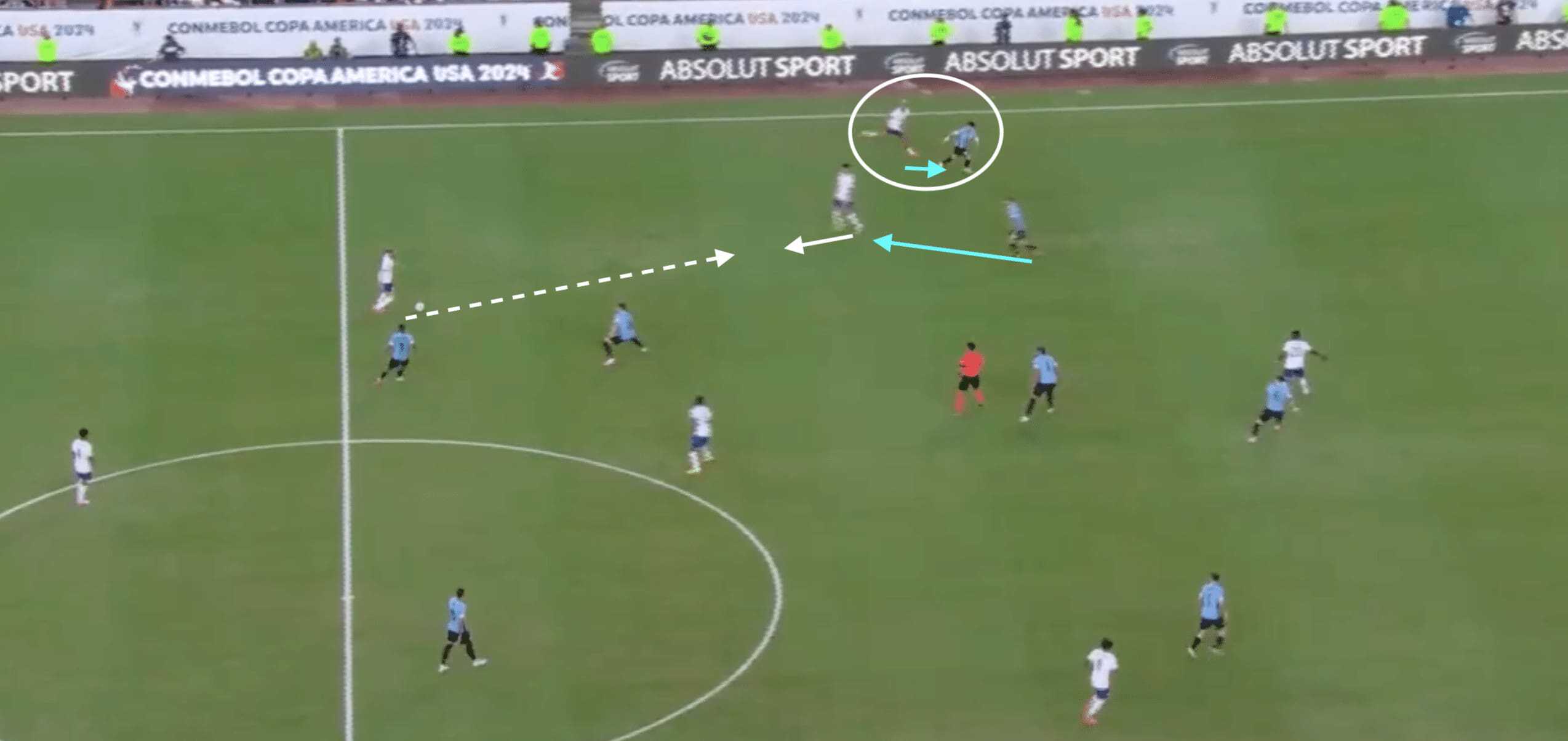
It resulted in the United States being completely outclassed when out of possession, with Uruguay’s tactical maturity denying the chance for the US to exploit holes in their marking structure. This was most effective in the wider areas, with the US still feeling the damning effects of Timothy Weah’s suspension and the necessity for their attacking creation to revolve around Pulisic in his absence. Such performances have sparked narratives suggesting the United States had become too one-dimensional under Berhalter’s watch, unable to accurately interpret the game state and adapt their tactics to swing the match in their favour.
Midfield mess
Many would believe that the United States’ midfield would be the crown jewel of their squad, boasting tremendous European experience with the likes of Adams, McKennie and Musah. However, American fans have suggested that their midfield line was fairly absent throughout the tournament, potentially suffering from an identity crisis in which the trio aren’t necessarily well-suited to their roles for the international team.
It can be said that the US midfielders showed intriguing effectiveness in their limited attacking opportunities, but the real issue revolved around their defensive contributions. For example, Panama’s equaliser in the second group stage match, in which 3 Panamanian players are allowed to pick up key pockets of space between the lines- ultimately resulting in Cesar Blackman collecting the ball and firing home from the edge of the box.
It amplified a consistent issue for the American midfield: they often come up second-best when looking to hold onto possession and breaking up play throughout the middle third of the pitch.
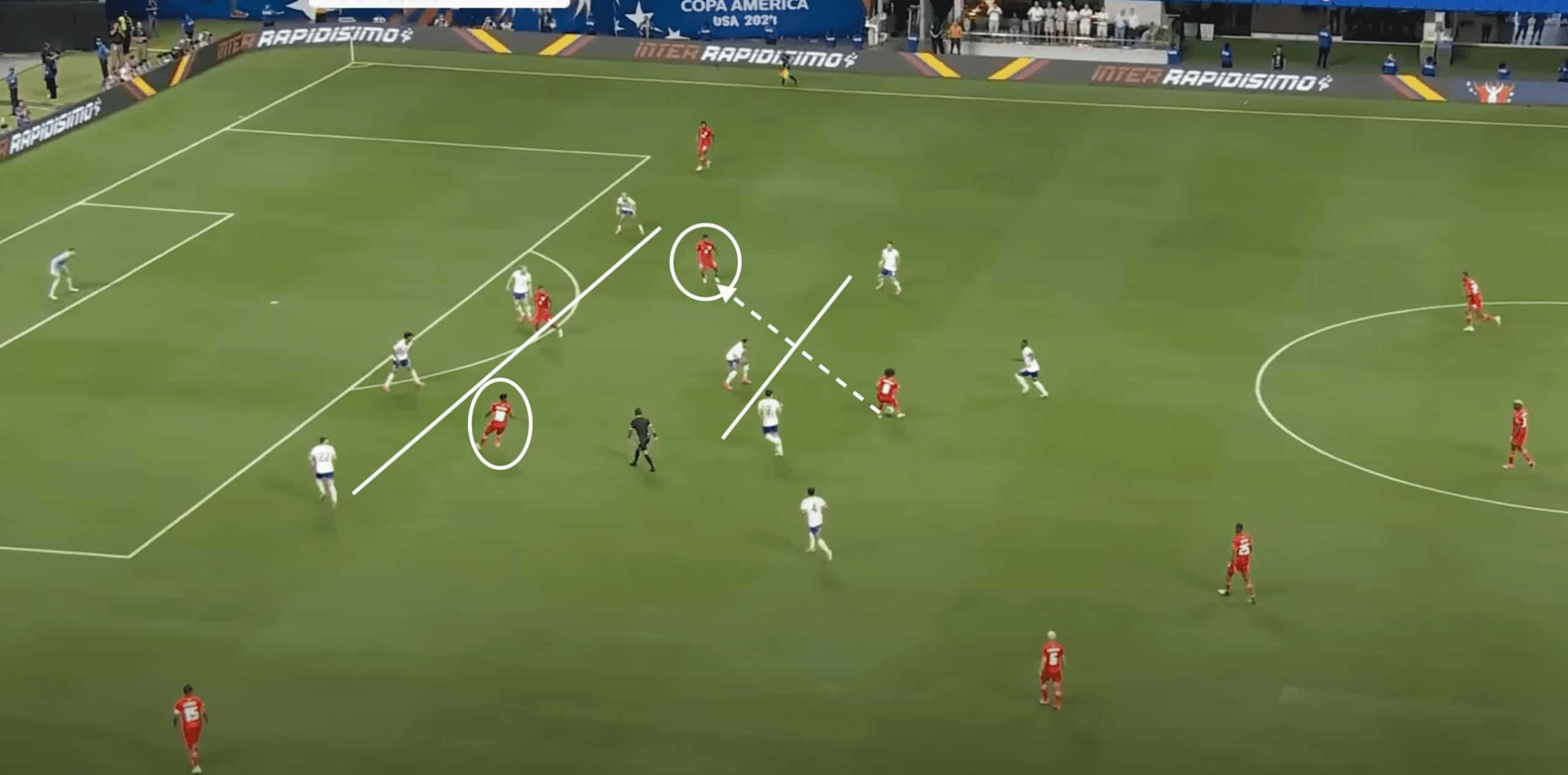
One of the key features of the US midfield throughout the build-up and group stage of the Copa América would be the fact that they appeared incredibly flustered when Musah would drop deeper to collect the ball as the number 6. Even with Americans placing their trust in the AC Milan midfielder to make the holding midfield role his own, we saw repeated incidents in which both Brazil and Uruguay were able to apply pressure and force high turnovers, with Musah unable to carry the ball up the pitch.
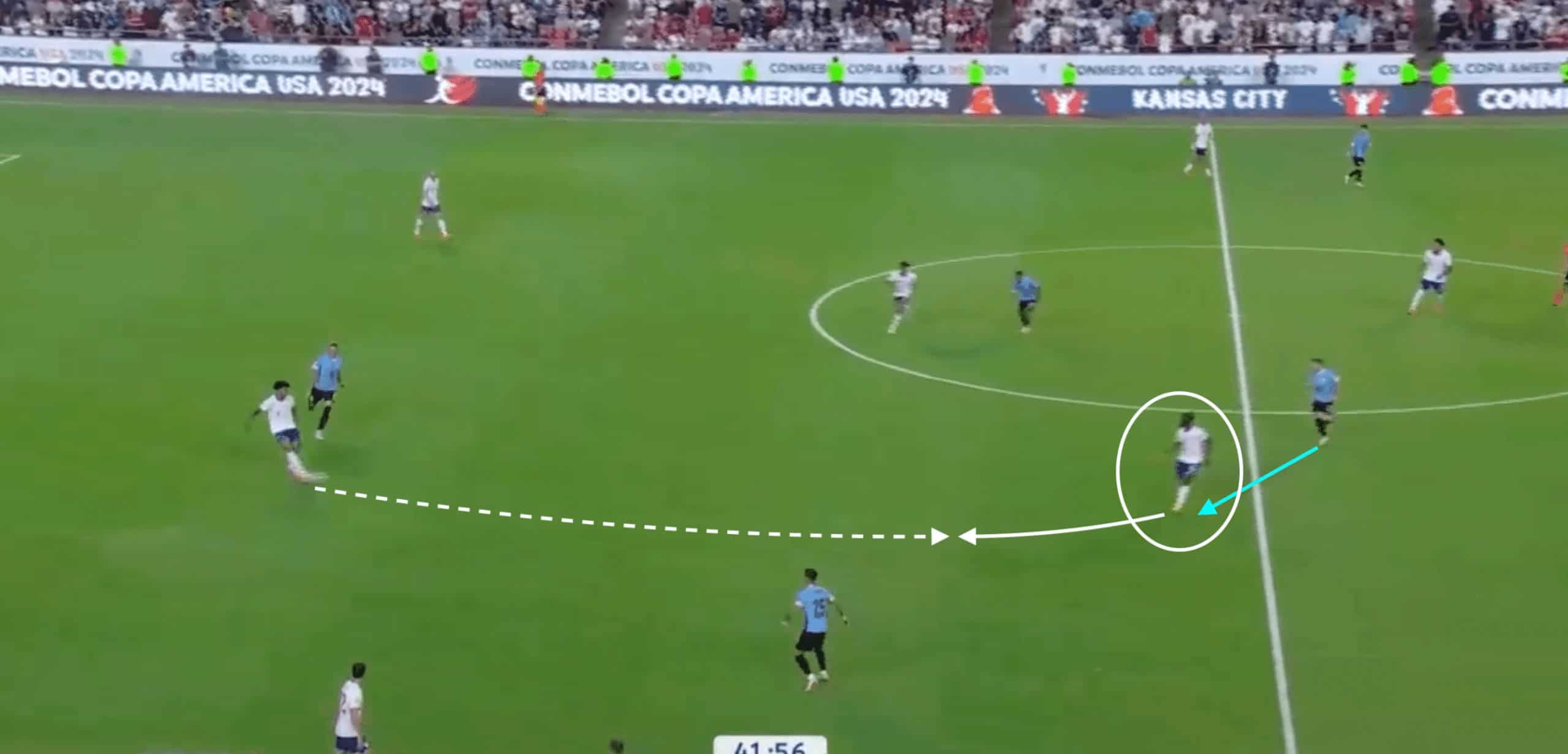
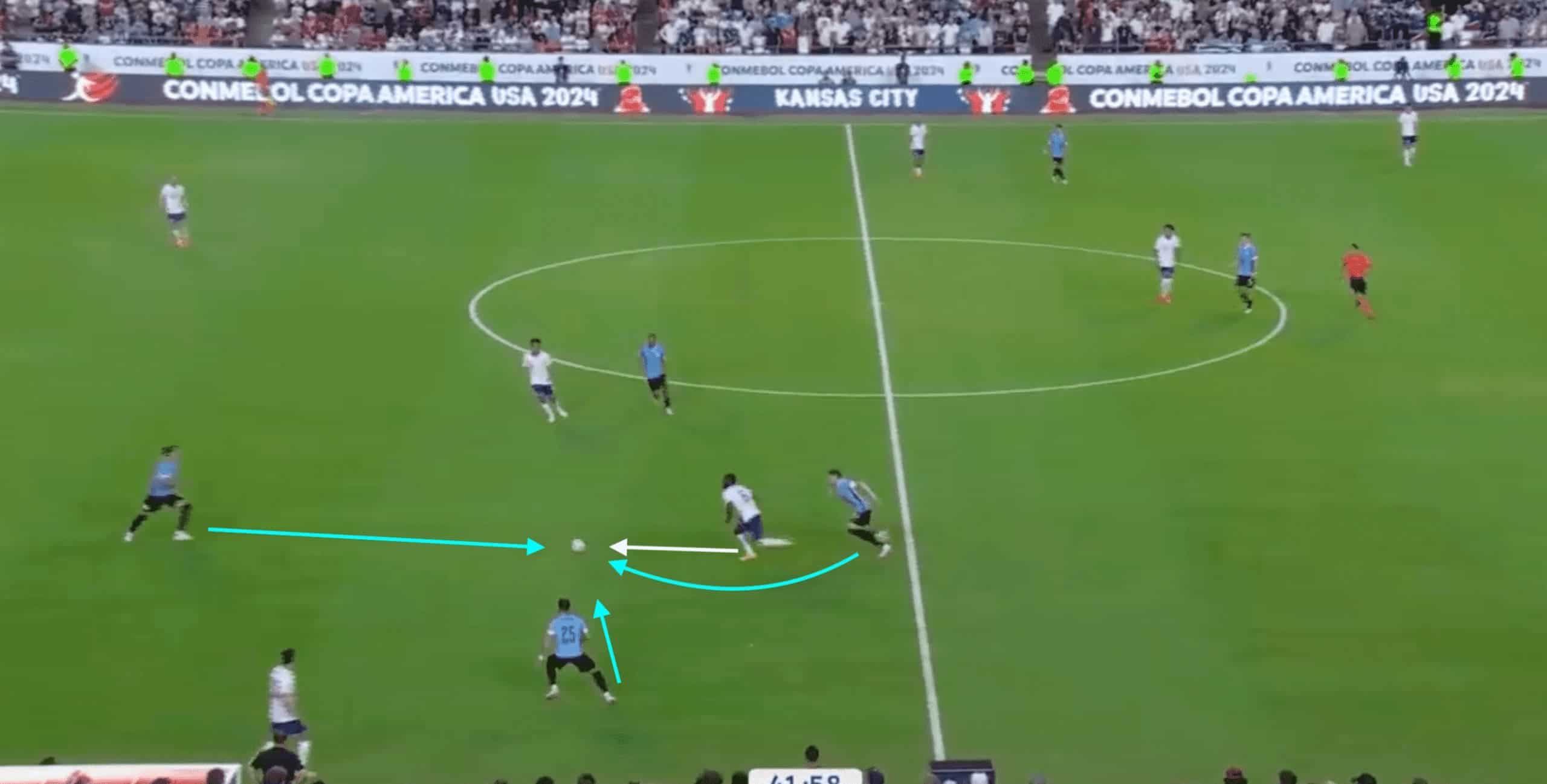
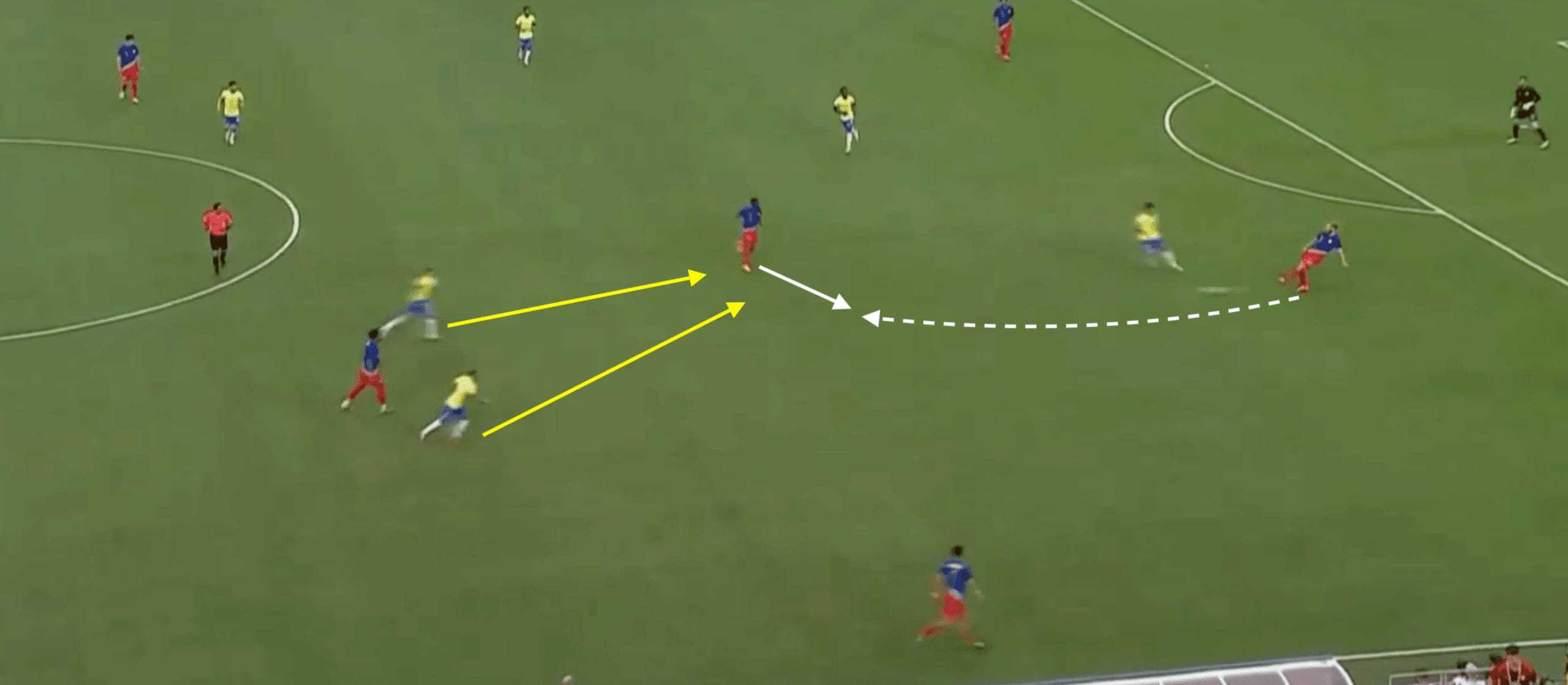
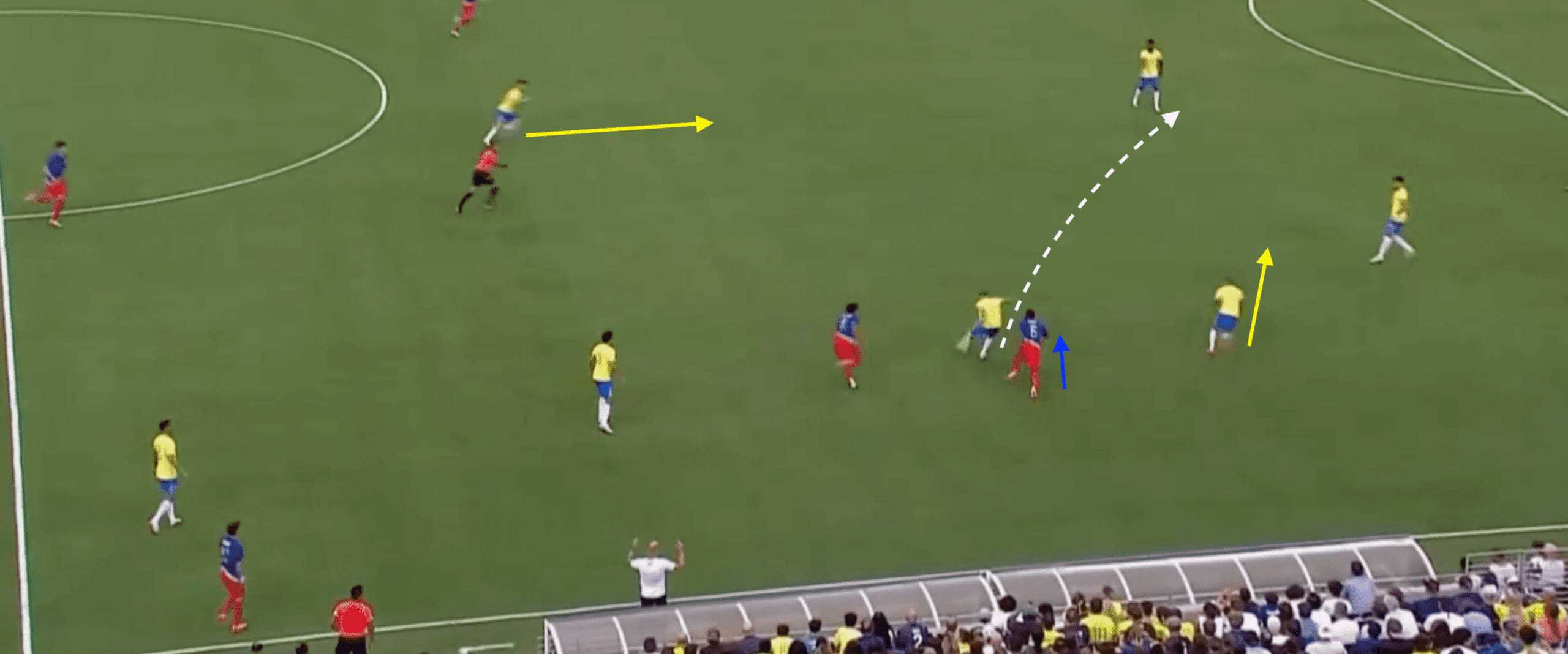
As a collective, the United States midfielders combined for a disappointing 4 out of 16 successful ground duels in the most pivotal game of their tournament, with a 28.6% win rate through the air not being something to be proud of either. The defensive game plan of the United States appeared to invite opposition pressure, with the US ranking 2nd worst for PPDA with 15.61, along with the worst challenge intensity across the entire tournament (4.4). However, in the moments in which we saw them press higher up the pitch out of desperation, their uncoordinated effort meant that they could be bypassed with ease, creating acres of space for the opposing midfielders to deliver balls into the box.
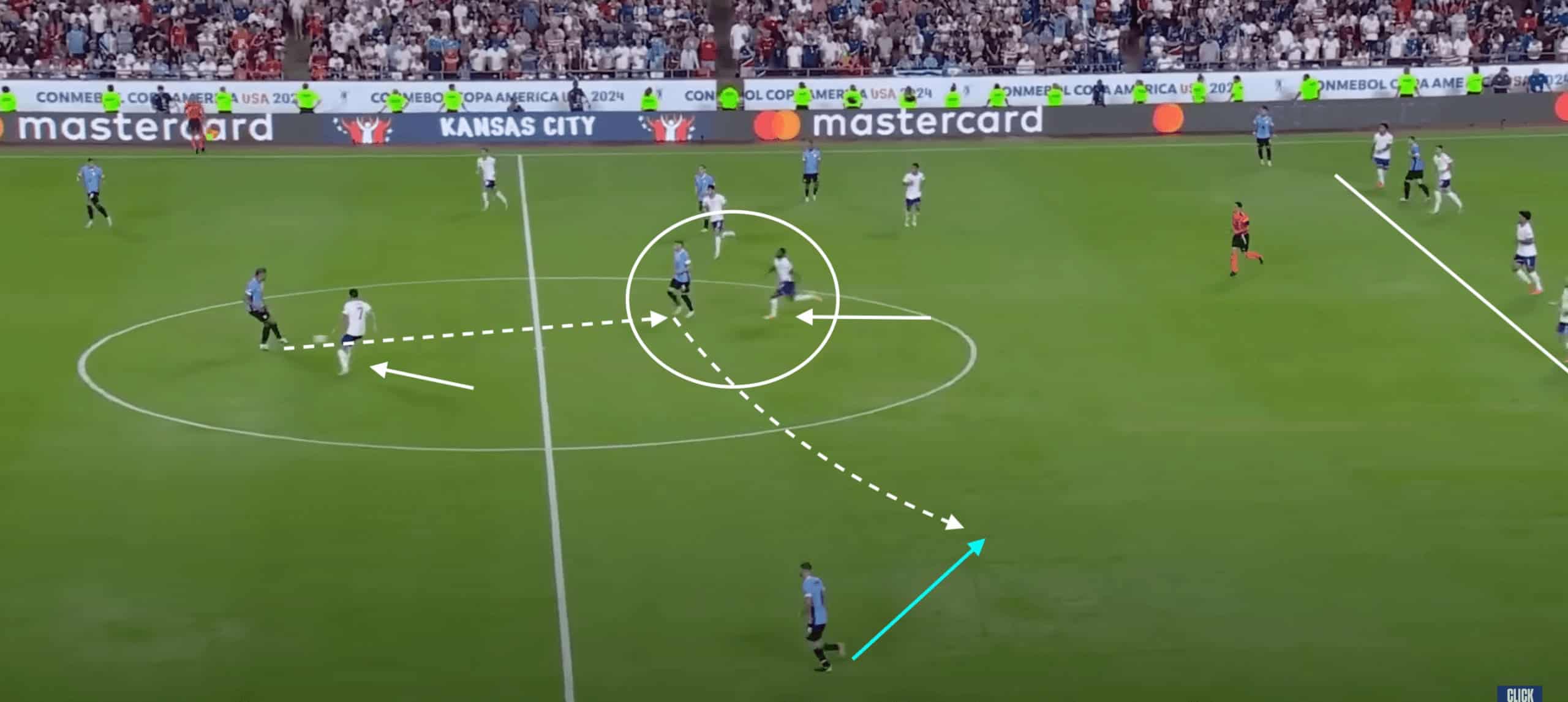
Bright sparks
Despite their embarrassing exit from the Copa América, the next coach of the USMNT will not have such a significant overhaul on their hands, with the US displaying some signs of flair and resembling that of a top footballing nation. It is not all doom and gloom, with emerging narratives suggesting that the US were potentially a Timothy Weah red card away from a comfortable path into the round of 16, only to be stifled by Panama’s extra man.
When observing the tournament data, some may find it surprising that the United States had a greater presence in the opponent’s penalty area than eventual champions Argentina. The United States’ 17.27 penalty area touches per 90 would suggest that they certainly enjoyed consistent spells in the most dangerous attacking zones on the pitch, even if this figure may be exaggerated by continued dominance against 84th place FIFA ranked Bolivia.
However, nothing can be taken away from the fact that the US pressed the issue and dominated the early proceedings against a top-class Uruguay side, straying away from individual talent and combining for some inspiring attacking sequences. In this example, the movement of the US midfield completely unpicked any Uruguayan resistance, with Musah’s darting deep run allowing Adams to penetrate space and receive the ball between the lines. They also displayed how effective they could be when Uruguay were caught out of their resilient defensive shape, finding success in transition when creating opportunities to flash the ball across the face of the goal.
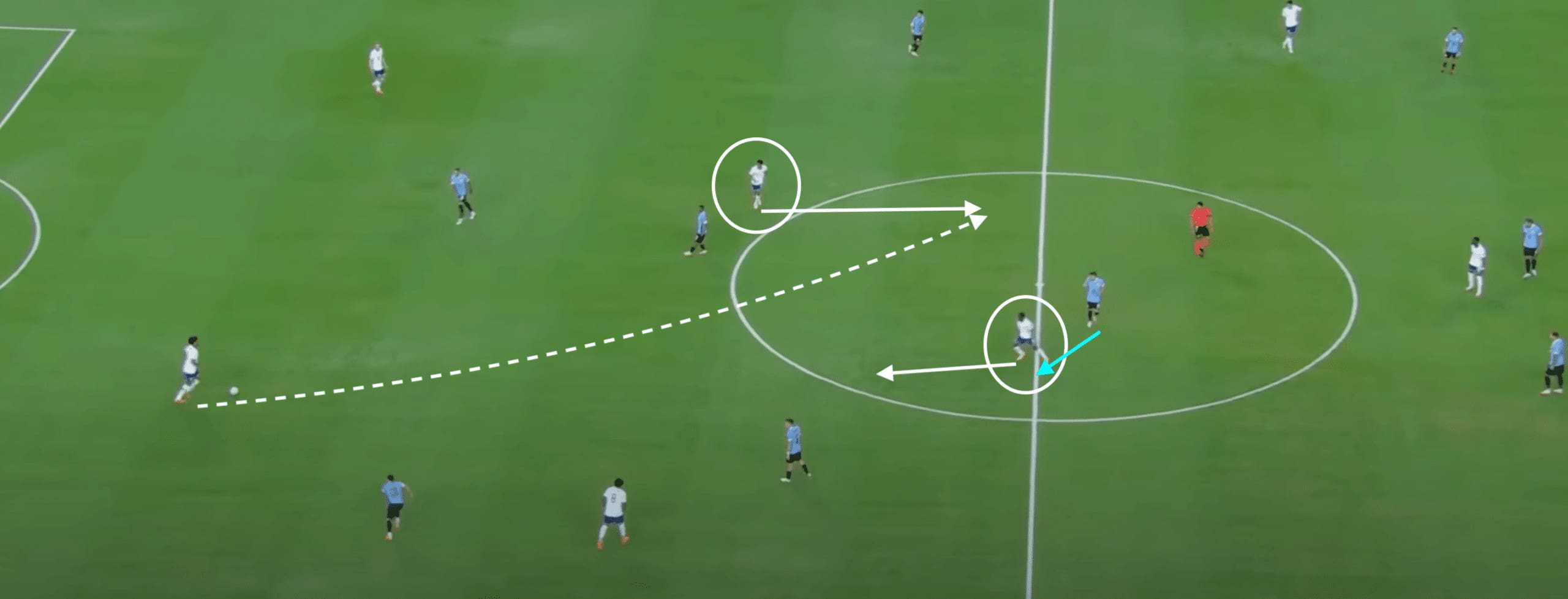
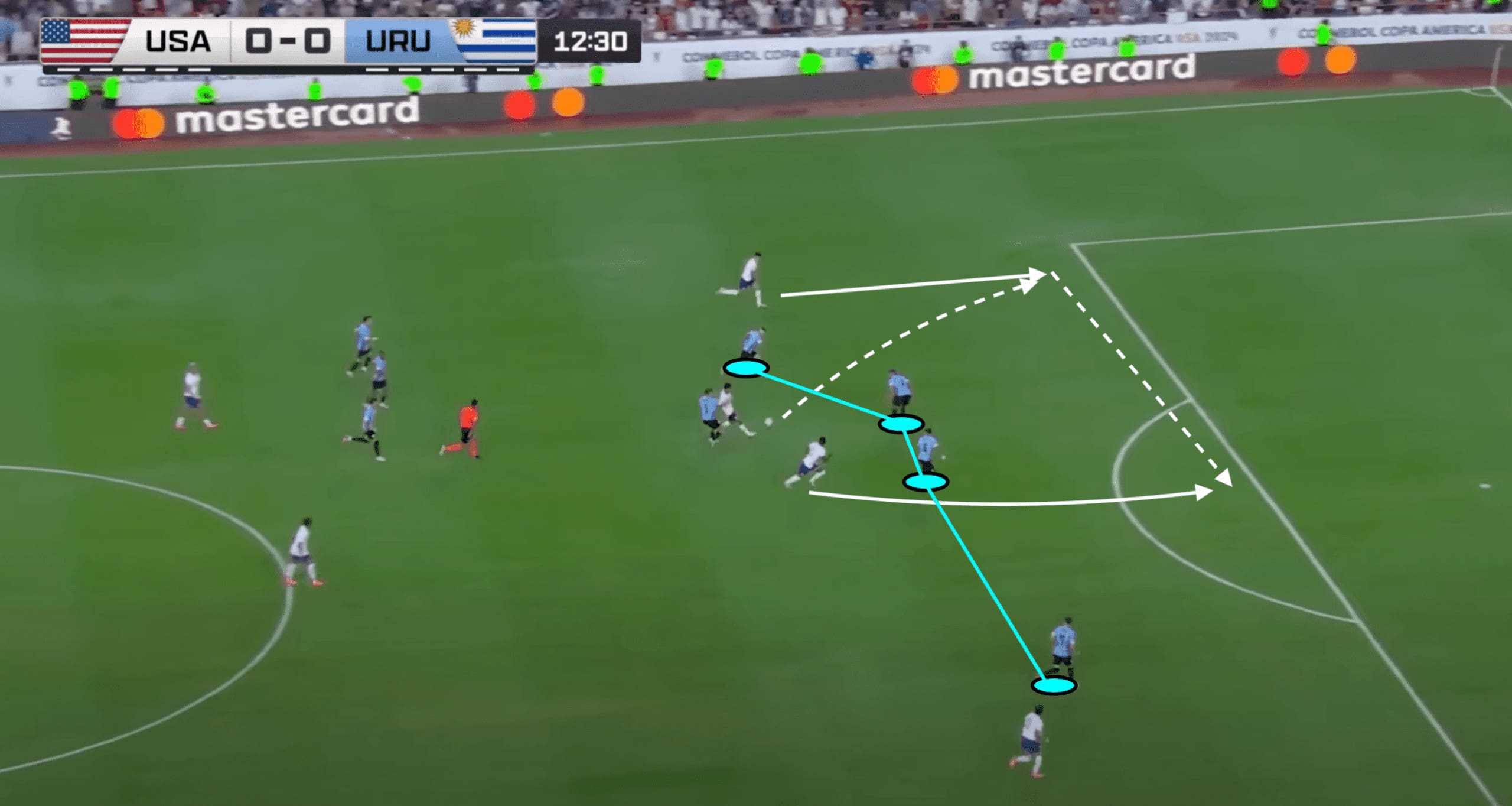
But crucially for the US, the top sides in world football have the tacticians and know how to adapt to these alarming situations, therefore minimising such opportunities and creating more laboured attacking performances- especially when looking to come back into the match. Unfortunately, a 66.1% passing accuracy towards the final third was much more representative of the weaker nations in the tournament, with the US unable to provide the necessary chance creation to match their wastefulness in the box. For all their attacking threat in the penalty area, the present example from Haji Wright perfectly depicts their lack of attacking intelligence which left them floundering in front of the goal, with the Coventry striker electing to take on an ambitious contested shot instead of working the ball across the box to an unmarked teammate.
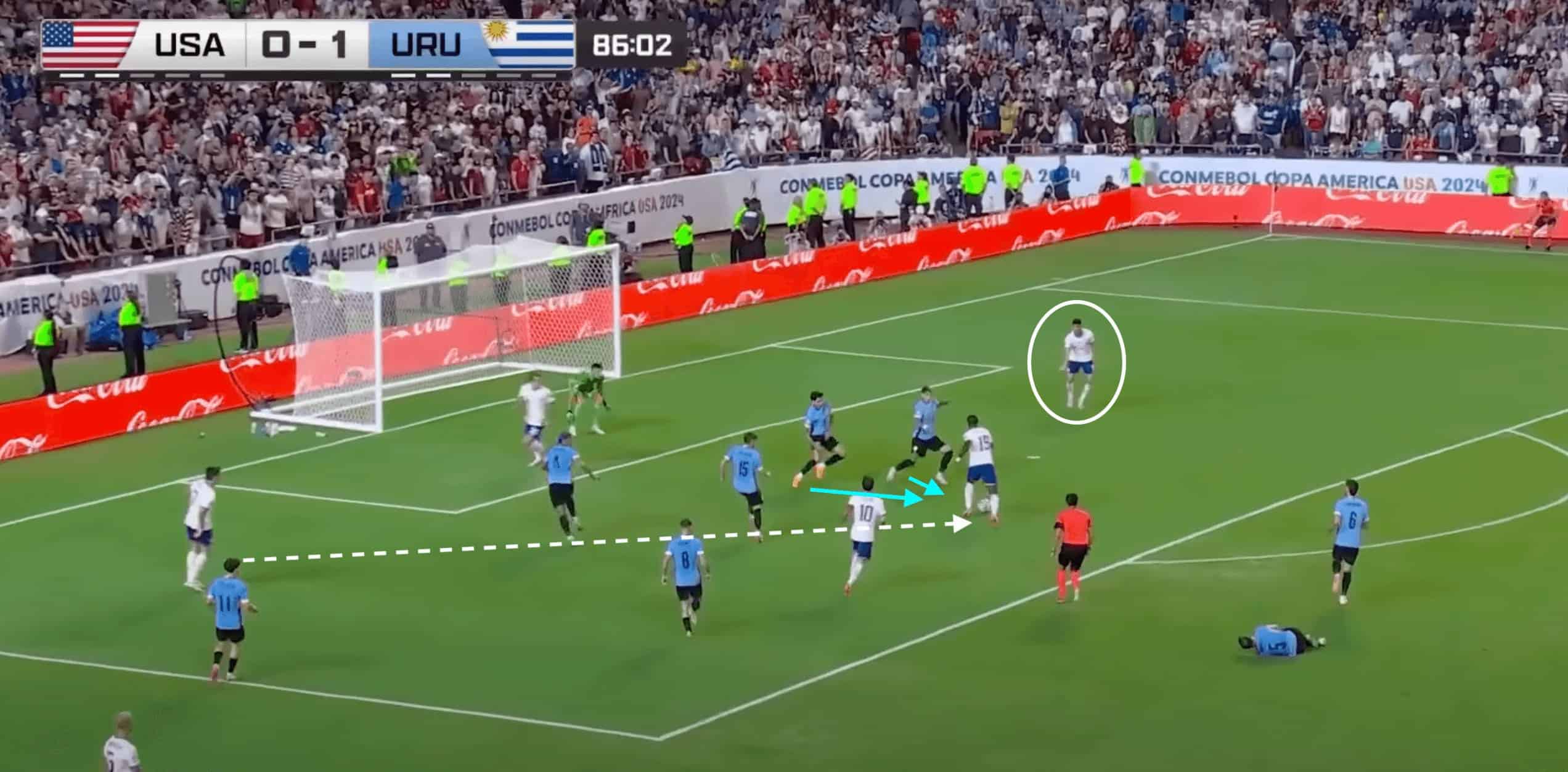
Conclusion
With a race against time for the US to hire their next great head coach, they should look to find a managerial profile suited towards developing their young stars while acknowledging the compelling expectations placed upon those who don the stars and stripes. Even though the Copa América was certainly underwhelming for American supporters, they will once again hope to see an improved and matured squad when they welcome the world’s best in 2026. With many of their players supposedly reaching their prime years, adding to increased comfort within the national setup, the World Cup represents a pivotal opportunity to finally meet the expectations they have failed to accomplish thus far.





Comments